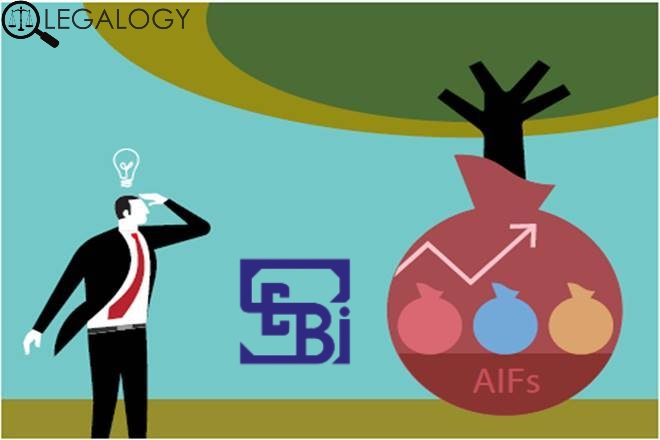An Alternate Investment Fund (‘AIF’) is a privately pooled investment vehicle that involves the collection of funds from investors and investing it in accordance with the definitive strategy of the AIF scheme. Since investment in AIFs is associated with high risks, it is important to ensure that potential investors have sufficient information in order to make an informed decision of investing in an AIF.
SEBI (Alternate Investment Fund) Regulations, 2012 (‘AIF Regulations’) specified broadheads for a disclosure required to be made in a Private Placement Memorandum (PPM), a document provided to a potential investor containing disclosures, on the basis of which he can decide if he wishes to invest in the AIF. In the absence of a specified format, investors often struggled with challenges like complex information which is not easily comprehensible or absence of sufficient information to make an informed decision. Thus, Securities and Exchange Board of India (‘SEBI’ or ‘Board’) vide its circular dated February 05, 2020, read with circular dated June 12, 2020, made an attempt to standardize PPMs with a view to ensuring a minimum level of information in a simple & compoundable format.
READ: SEBI Circular No: SEBI/HO/IMD/DF6/CIR/P/2020/24
The SEBI templates enlist detailed disclosures of the AIF vis-à-vis warehouse investments, co-investments, distribution waterfall, principles used for portfolio valuation, and the like. The standardization has taken effect from March 01, 2020. For this purpose, SEBI provided two standardized formats: – Annexure I (For Category I & Category II AIFs) and Annexure-II (For Category III AIFs)
READ: SEBI Circular No: SEBI/HO/IMD/DF6/CIR/P/2020/99
The standardized PPMs are further divided into two parts, namely:
- Part A: Mandatory Minimum Disclosures
- Part B: Voluntary Additional Disclosures (that the AIF wishes to provide)
One question that arises on a plain reading of the said circulars is that there is no explicit mention of whether AIFs which are already registered with SEBI would be required to modify their PPMs as per the circular. When SEBI had issued a circular in 2014, calling for increased disclosures in PPMs, it specifically required all existing AIFs to send to their investors an addendum to their existing PPM within 30 days of the circular and also to file a copy of such addendum with SEBI at least 7 days before sending the addendum to the investors. A similar provision has not been included in the Circular in question.
READ: SEBI Circular No: CIR/IMD/DF/14/2014
Further, SEBI requires the terms of contribution or subscription agreement to be aligned with the terms of the PPM, the scope of which cannot be exceeded. However, a practical difficulty that arises here is with respect to AIFs that have been registered with SEBI prior to March 01, 2020, but are yet to execute the contribution/subscription agreements. Keeping in mind that the PPM formats were not prescribed at the time of their registration, the question of how they are expected to align their contribution agreements with the PPMs remains unanswered.
The circular exempts Angel Funds and AIF Schemes wherein each investor has committed a minimum of INR 70 Crores and additionally provided a waiver to the fund with respect to the SEBI template. However, it is unclear whether in case of an AIF (‘Investor AIF’) investing in another AIF (‘Investee AIF’), then in such case would each of the investors of the AIF be required to meet the INR 70 Crores threshold and accordingly would the aforementioned waiver be required from each such investor.
Vis-à-vis the threshold for exemption, SEBI has not clarified whether the contribution of affiliates & group companies of an investor would be clubbed. Prima facie, it appears that each investor would be considered separately. It may be noted that in the AIF Regulations, 2012, the concept of joint investors was recognized wherein 2 people could meet the minimum investment threshold of INR 1 Crore if they met the prescribed criteria.
Further, Annexure 3 of the said circular provides a format of waiver that is required to be provided by each investor (meeting the threshold) in order to claim the exemption from the standardized PPM format. From the said annexure, it may appear that the execution of the waiver by each investor is to be made after the AIF has been registered with SEBI. However, this leads to confusion on whether the placement memorandum, at the time of registration with SEBI, needs to be in a format different from the one prescribed in the circular. Another interpretation of this would be that the waivers would be needed to be obtained prior to registering the AIF with SEBI. This could prove to be problematic as usually investors would be unwilling to sign such a waiver prior to commercial negotiations and signing of the term sheet (in some cases, the contribution agreement). Further, if the AIF was granted the exemption, but the investor failed to invest the promised amount (below the minimum threshold), it would be burdensome for the AIF to bear the consequences or to file a fresh PPM with the detailed disclosures as per the SEBI template.
The draft templates provided by SEBI include disclosures on important aspects like potential conflicts of interest, risk factors, investment strategies, etc, which not only provide to the potential investors’ vital minimum information but also bring about a comprehendible presentation of such information.
The circular depicts SEBI’s attempt to make the AIF environment more conducive owing to its association with high risks. However, there are a number of questions that remain unanswered and clarifications from the Board in this regard in due course would be welcome.













